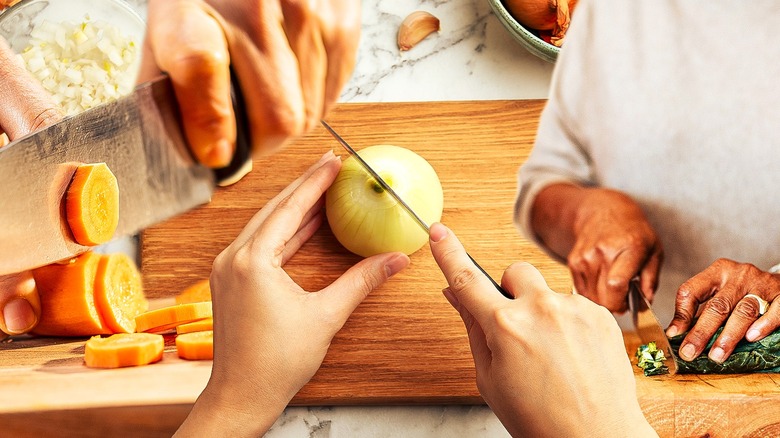In the culinary world, the selection of the right tools can make a significant difference in productivity and safety. When it comes to food preparation, choosing the correct cutting board is vital, and determining the safest cutting board should be a priority for anyone working in the kitchen. With so many optionsincluding wood, plastic, bamboo, and otherswhat factors should culinary professionals consider when selecting the best board?
The importance of cutting board safety directly relates to food hygiene, the risk of cross-contamination, and the overall effectiveness of kitchen tools. In this article, we'll explore the various cutting board materials to help you make an educated choice.

Different Types of Cutting Boards
When it comes to cutting boards, the options are plentiful. Here are some of the most common types:
1. Plastic Cutting Boards
Plastic cutting boards are non-porous, reducing the risk of bacteria retention. Many are also dishwasher safe, making them easy to clean. However, they can show knife marks and wear out over time.
2. Wooden Cutting Boards
Chefs have relied on wooden boards for ages because of their durability and visual appeal. Hardwoods like maple and walnut are particularly resilient and can be less prone to bacterial growth if properly cared for. Their 'self-healing' properties enable the cuts to close up, mitigating contamination risks.
3. Bamboo Cutting Boards
Bamboo boards are increasingly popular due to their eco-friendliness and strength. They resist deep cuts, which can help limit bacterial growth. However, they do require careful upkeep to avoid cracks.
4. Glass Cutting Boards
While glass boards are very hygienic and easy to clean, they can quickly dull knife blades, making them less suitable for professional use.
Key Factors for Safety
In assessing which cutting board is the safest, consider these important factors:
1. Bacterial Growth
The cutting board material significantly influences bacterial retention. Studies indicate that wooden boards can be safer than plastic when properly maintained, as bacteria tend to die off quickly on a clean wooden surface.
2. Ease of Cleaning
Select a cutting board that promotes easy sanitization. While plastic boards are dishwasher safe, wooden and bamboo boards generally require hand washing with soap and water, coupled with regular oiling for maintenance.
3. Cross-Contamination Risks
Utilize separate boards for different food categoriesmeats, veggies, and breadto reduce the risk of cross-contamination. Incorporating color-coded boards can also enhance safety.
Maintenance Strategies for Your Cutting Boards
1. Oiling Your Boards
Regular application of food-safe mineral oil on wooden and bamboo boards can help prevent cracking and extend their lifespan. For more information on caring for cutting boards, check out this guide.
2. Consistent Cleaning
Always clean cutting boards with hot, soapy water after each use and sanitize them with a vinegar or bleach solution from time to time.
3. Inspecting for Damage
Frequently check your cutting boards for wear or deep cuts and replace any that show significant damage to maintain a safe cooking environment.
Conclusion
Choosing the right cutting board is vital for ensuring food safety and efficiency in the kitchen. Ultimately, the decision hinges on individual preferences and needs, as each material presents its own advantages and disadvantages. Therefore, the safest cutting board ultimately depends on your cooking style and kitchen setup.

Frequently Asked Questions (FAQ)
1. Which cutting board material is best for minimizing bacteria?
Wooden boards are often considered safer due to their natural antibacterial qualities, provided they are maintained correctly.
2. Is it okay to use the same cutting board for meat and vegetables?
For optimal safety, it's recommended to use separate boards for raw meat and other food items to prevent cross-contamination.
3. Whats the best way to care for a bamboo cutting board?
A bamboo cutting board should be washed by hand, dried immediately, and oiled regularly to ensure its durability.
As an Amazon Associate, I earn from qualifying purchases.


























